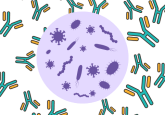Novel PCR-based device could reduce diagnosis time of infections

A collaborative team of engineers and scientists at The University of Arizona (AZ, USA) has created a novel diagnostic device for the diagnosis of tissue infections. The new droplet-on-thermocouple silhouette real-time PCR (DOTS qPCR) could speed up the diagnosis of tissue infections by physicians. Their findings were reported in the journal Science Advances.
When a patient arrives at a hospital with a serious infection, physicians have minimal amount of time to make an accurate diagnosis and prescribe treatment(s). The ability to act quickly and correctly can improve the patient’s outcome, and prevent the spread of infection.
The DOTS qPCR technique, as the name suggests, is based on the PCR technique. PCR involves rapidly heating and cooling DNA molecules, in a process known as thermal cycling. Thermal cycling amplifies the target DNA, by creating copies, allowing for identification of the pathogen causing the infection. One of the main issues with PCR is that tests can take up to an hour; a particular problem for physicians who usually have less than 10 minutes to make a decision.
With DOTS qPCR, the identification of infections is much quicker and can be achieved within 30 seconds to 3 minutes. The reason for the faster results is that DOTS qPCR requires fewer thermal cycles, as few as four, compared with conventional PCR, which requires between 18 and 30.
DOTS qPCR relies on the measurement of subtle surface tension changes at the interface of a water droplet suspended in an oil medium. The water droplet, containing the target DNA to be amplified, moves along a heat gradient in the oil, initiating the chain reactions. As more copies of the target DNA are created, they move toward the oil–water interface, altering the surface tension in a measurable manner. Incredibly, the size of the droplet can be measured using a smartphone camera.
Another advantage of the device is that the system does not require samples to be completely free of other contaminants. This again can reduce the time for detection as sample-preparation steps are reduced. “The system still works with relatively dirty samples. We can use very minimal processing and still make the detection in a short time.” noted Jeong-Yeol Yoon, the corresponding author for the study.
Yoon also emphasized that DOTS qPCR is inexpensive compared with its counterparts, which employ costly and time-intensive testing methods involving fluorescence detection, lasers and dark chambers. “It’s easy to use, smartphone-integrated, and saves money and labor using expensive equipment,” Yoon explained.
Ultimately, the team hopes the technology will transform the procedures of hospital emergency rooms, “We’re envisioning a device that will provide physicians with answers as soon as they perform a biopsy, while they’re still sitting with the patient,” concluded Dustin Harshman, one of the study’s authors.
Sources: Device Could Speed Diagnosis of Infections; Harshman D, Rao BM, McLain JE, Watts GS, Yoon JY. Innovative qPCR using interfacial effects to enable low threshold cycle detection and inhibition relief. Science Advances 1(8) doi: 10.1126/sciadv.1400061 (2015).




